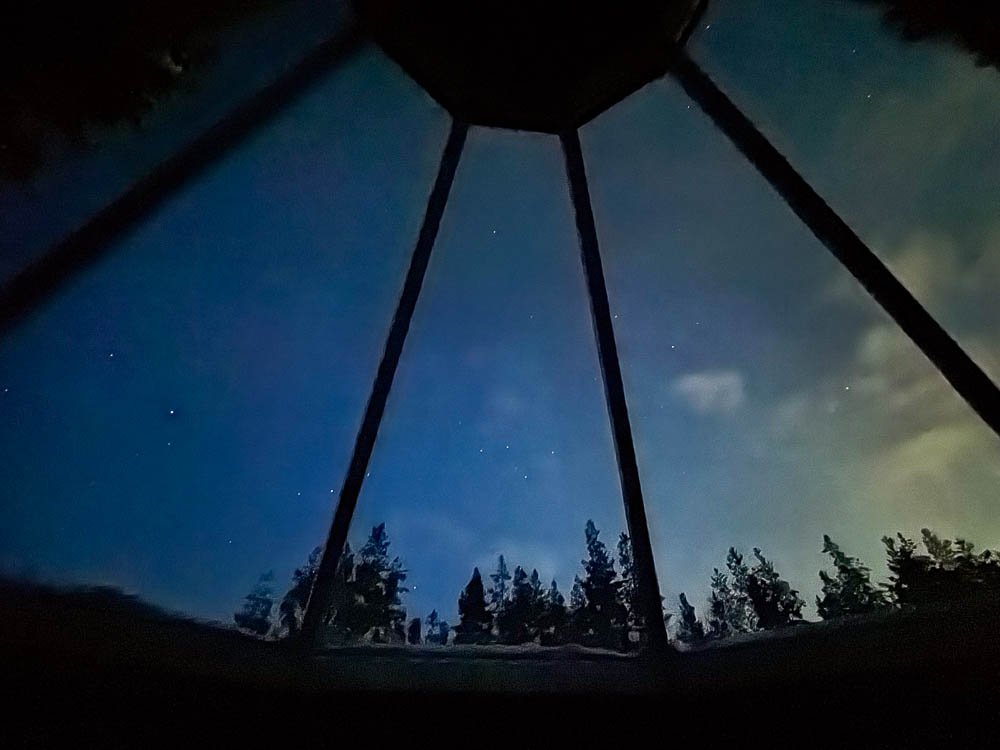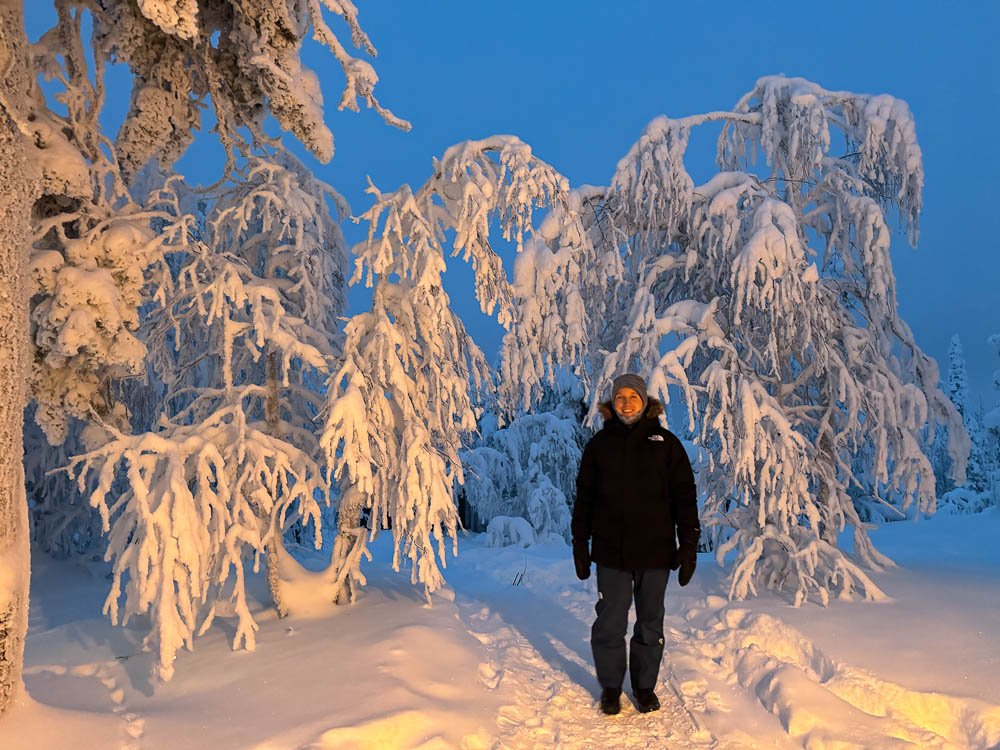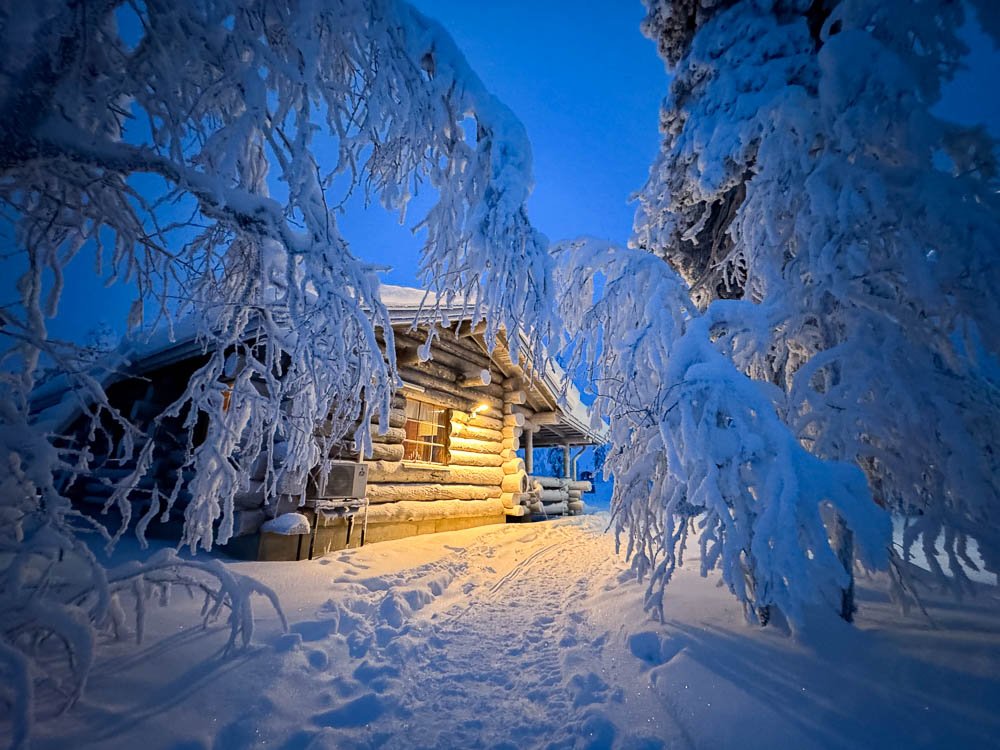Tips on Viewing the Aurora – How, Where, and When
The aurora, also known as the northern or southern lights, is one of Earth’s greatest natural phenomena. Chasing the aurora requires a bit of luck, but you can better your odds by arming yourself with information and knowing where to go and what to look for.
Interested in something specific? Click a button below to skip to a section.
What the aurora will look like
About auroras
The aurora is caused by solar activity, such as solar flares on the sun, that trigger magnetic storms. The particles from these storms collide with Earth’s magnetosphere and cause aural substorms, usually near the polar regions. The larger the solar storm, the brighter and more widespread the aurora, but without a disturbance in the solar system, there isn’t an aurora.
Source: Discover the World
Aurora forecast
Luckily for us, solar activity usually takes one to three days to affect Earth’s magnetosphere and cause an aurora. We’ll often know in advance which days will be best to view the aurora, although short-term forecasts are more accurate (more on forecasts below).
Colors of the aurora
The makeup of Earth’s atmosphere affects the aurora’s color. The atmosphere is approximately 78% nitrogen, 21% oxygen, 0.93% argon, and 0.04% carbon dioxide, along with trace amounts of neon, helium, methane, krypton, ozone, hydrogen, and water vapor.
Blue and purple
Deep blue and purple are the least common colors of the aurora, only appearing when solar activity is high. You’ll see these colors at lower parts of the display, at altitudes of 60 miles or less. Here, the charged particles react with nitrogen in the atmosphere.
Green
Green is the most common aurora color. This is partially because our eyes are more sensitive to the green color spectrum, but also because of the higher amounts of oxygen in the atmosphere. We see green auroras when charged particles collide with high concentrations of oxygen molecules in Earth’s atmosphere at altitudes around 60 to 190 miles.
Yellow and pink
Yellows and pinks are only seen during high solar activity. You’ll see pink colors between the green and red layers. You’ll see yellow amongst the green layers in the aurora.
Red
Red is more visible from lower latitudes, although seen less frequently closer to the Earth’s magnetic poles. You’ll see red auroras at the higher edges of displays, about 180 to 200 miles above Earth. At this height, oxygen is less concentrated and is excited at higher frequency levels.
Source: Alienyrox
How to see the aurora
Dark skies
Best timing varies by the location you’re viewing the lights from, but you’ll need dark skies regardless. If you’re planning a trip with hopes to view the lights, time it around the moon phases. The new moon and days when the moon sets early are best.
Light pollution
You’ll want to avoid cities and large towns. Light pollution can travel up to 200 miles from its source. The closer you are to it, the worse your night vision will be. Check out this map to see how much light pollution is in the area where you’re hoping to view the aurora.
Weather
Not only does the solar atmosphere need to work in your favor, but the weather does, too. You’ll need clear skies to view the aurora because clouds sit lower in the atmosphere than the aurora. We’ve also heard that the colder and windier it is, the higher the chance you have of seeing the lights.
Aurora forecast apps
First download the Aurora app (iPhone/Andriod). We love that it’s free, very easy to use, has aurora alert notifications, and others can report when they’ve seen the aurora near you. It’s great for short-term forecasting.
If you’re wanting more detailed forecasting, download the Northern Light Aurora Forecast app (iPhone/Android). It has long- and short-term forecasts, as well as the option to pay for customized aurora alerts.
Lastly, don’t forget to monitor the weather. The app Astrospheric (iPhone/Andriod) shows cloud conditions with forecasts up to three days out.
The Aurora app's forecast when we saw the northern lights in Finland (we didn't have cameras on us to capture it)
The Aurora app's forecast when we saw the strongest northern lights in Washington (the red area shows where the lights are most visible)
What will the aurora look like?
Since humans don’t have great night vision, the aurora can be difficult to see with your naked eye. The photos you see online often depict extremely bright colored auroras – that’s what cameras are capable of capturing, but not what you’ll see with your eyes.
Instead of looking for bright colors in the sky, look for clouds that aren’t behaving like clouds. These “clouds” can look like they’re moving faster than normal, be a strange shape, look a bit wispy, or appear a little brighter than normal. You should be able to see stars through them.
Once you let your eyes adjust to the dark (this takes up to 20 minutes), you may see faint colors, but we should verify it is truly the aurora by using a camera. Pull out the camera on your phone, and if it has a night mode automatically turned on, you should be able to see the aurora looking at your screen. If not, hold still and take a photo where you think the aurora is at. Taking a video of the aurora won’t work well, so make sure your phone is on the photo mode.
When can you view the aurora?
The northern lights aurora season is generally between late September and late March. This is when nights are longest near Earth's northern magnetic poles. Visit aurora destinations during the spring (mid-March) and fall equinox (mid-September) for the best odds of the aurora occurring. In the southern hemisphere, the southern lights are best between March and September.
It’s possible to see them in locations farther away from the magnetic poles any time of year, but that requires larger solar storms.
The aurora is seen most often seen between 9 p.m. and 2 a.m., with the best sightings between 11 p.m. and midnight.
Best locations to view the aurora
You’ll have the best odds of viewing the aurora near the Arctic and Antarctic regions, near the Earth’s magnetic poles in the Aurora Oval. It’s also possible to view them further away from the poles, although it’s less frequent and requires large solar storms. We have seen them multiple times at home in Washington state, though!
Source: See The Aurora
Wherever you’re choosing to attempt to view the lights, you’ll want to be in a remote area, away from light pollution with great views of the dark night sky. If you’re in the northern hemisphere, you’ll want to have the darkest, most unobstructed views of the sky to the north, or the opposite for the southern hemisphere.
Locations that are dark sky sanctuaries, undeveloped lakes, and fields are great places to keep watch. Viewing from higher elevations also helps.
Mount Rainier with a light aurora forecasted
Aurora tours and hunts
If you’re in an area known for aurora sightings, paying for a guided tour is a great way to see the aurora since local guides are more familiar with the forecast and best viewing locations.
There are two kinds of aurora outings – hunts and tours. Aurora tours will take you to a premium location to view the aurora with no guarantee of seeing the aurora. Aurora hunts will drive until you find the aurora. Ask questions before booking an excursion for more information on what to expect from your outing.
Top places to view the aurora around the world
Northern Lights
Fairbanks, Alaksa
Fairbanks has the best location to view the northern lights in the world. Visit to have a 90% chance of seeing the aurora due to such little light pollution and precipitation!
Churchill, Canada
With the northern lights showing an average of 300 nights a year in Churchill, Manitoba making it one of the best places to view the aurora. While you’re in the area, take a guided polar bear tour, too!
Norway
Visit the Lofoten Islands, Trosmø, or Kirkenes to see the northern lights in Norway. Stay for five days or more for the best odds of seeing them. Here, and in Finnish Lapland (below), the northern lights are visible 200 nights a year.
Rovaniemi, Finland
Visit between December and March for the most beautiful holiday season and great odds of seeing the northern lights. Although it can be cloudy, when skies are clear, you’ll have 70% odds of seeing the northern lights in Finnish Lapland. We saw them twice while we were there! Check out our Lapland itinerary here, and where to view the aurora borealis from a glass igloo.
The view from our glass dome hotel in Finland
Iceland
Iceland is a very common destination for people seeking out the northern lights. However, since they have unpredictable weather, it’s suggested that you spend at least seven days in the country to see the lights. On average, the northern lights are seen here for more than 100 nights per year.
Southern Lights
Tasmania, Australia
The southern lights can be seen from Tasmania year-round, although it is more commonly seen during the winter months (between May to September).
Ushuaia, Argentina
Commonly referred to as the “End of the World”, Ushuaia is renowned for its proximity to the South Pole. It’s the gateway for Antartica cruises.
Falkland Islands
Located off the coast of Argentina, you can reach the Falkland Islands by air and sea. They’re known for stunning landscapes and abundant wildlife – including penguins!
South Georgia Islands
Located even further from the coast of Argentina, the South Georgia Islands are only accessible by ship. It’s one of the most challenging places to reach on earth, but there is very little light pollution here, which makes for great aurora viewings.
Other natural phenemena
Since you’re here, you’re obviously a fan of natural phenomena. Check out this blog to learn about bioluminescent kayaking tours next!
Search the blog for more adventures! Try searching for topics such as “hiking”, “waterfalls”, or “Oregon”.






















